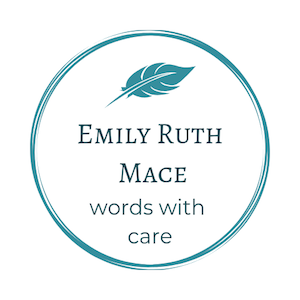I’ve been an irregular blogger, at best. I haven’t posted for a year or more, so I think that’s more than fair to say! Now that I can write in the daytime, though, I’m working on this.
Until recently, I’ve done most of my writing in the margins, on the sides of my life. I “write” in spare moments while driving, dictating thoughts into the voice memo app on my phone. I’ve ducked out to coffeeshops in the evening, leaving the kids at home for Dad to put them to bed. I’ve waited until after the kids have gone to bed and we’ve caught a round of grown-up TV, like the latest Star Trek or Top Chef. I often find that the creative juices start to flow again around 11 PM, which is great for writing, but not so great for sleep.
Writing in the daytime hasn’t been on the menu, so to speak.
But a change of routine freed things up…
My daily routine enjoyed a major change at the end of March. My long-term contingent alt-academic job ended, and I planned to spend April looking for editorial freelancing jobs, getting my life in order, and oh, yeah… writing.
On April 3, a few days behind schedule, I signed up for #CampNaNoWriMo, the spring-time writing challenge that offers a bit more flexibility than November’s National Novel Writing Month, or NaNoWriMo.
I should have expected that just getting my life in order—sorting through the boxes of stuff I’d brought home from my former office and looking for work—would take up enormous amounts of time and mental energy. I found myself with a lot less time for writing than I’d expected. I’ve been working on my resume and and CV. I’ve been redesigning this website, with the help of a new WordPress theme, and an awesome resource of whose 30-day free trial I’m taking full advantage, Canva.com, as a source of fun new images and logos.
But what about writing in the daytime?

Oh, I wrote during April, certainly, and even in the daytime. My #CampNaNoWriMo project involved taking approximately 12,000 words of essays and blog posts that I’ve written, here and elsewhere, on the theme of December holidays in an interfaith family, and expanding on some of those essays and themes into what I hope will be a longer set of essays. I almost reached my goal: roughy 39,000 words out of a planned 45,000. And I’m looking forward to continuing that work as we move into May, particularly to find ways to make it all more official. (Stay tuned!)
Finding time to write…
I wrote when inspiration struck (sometimes after watching TV at night, so technically not in the daytime).
I wrote when I reminded myself I needed to put my butt in the chair and get the damn writing done, or nothing would happen. Once, I set a timer, wrote for 15 minutes, stood up, stretched, got some water or tea, and sat back down to write some more. I Tweeted out my routine, too, to writing groups on that platform so I had accountability to sit down and do the thing.
I also wrote when I reminded myself that my word for 2019 is “intention,” which I’ve taken to mean that “nothing is going to get done unless I get good and intentional about actually doing it.” That “nothing” includes my long-time hope to one day have a book contract and, eventually, a something that’s an actual physical book with my name on the cover. The only way this is going to happen is if I make it happen. Now, at least, my schedule change takes care of finding time to write, whether in the margins, in the lines, in the nighttime, or in the daytime.
And then there’s editing.
 In the meantime, since my days are now free, I need to find a way to contribute to my family’s livelihood. I could look for a another full-time job, but instead I’m throwing my hat in the freelancing ring.
In the meantime, since my days are now free, I need to find a way to contribute to my family’s livelihood. I could look for a another full-time job, but instead I’m throwing my hat in the freelancing ring.
I’ve always been a good editor, and I enjoy the work. Over the past few years working on the grant project, I’ve shepherded over 20 faculty projects from glimmer-in-the-eye to finished, published digital project. I’ve worked on everything from project planning and what essentially translates to “developmental editing” (as the faculty sort through where their projects are actually going and where they think they’re going) to final copy editing and proof reading of their digital projects. Their projects included everything from formal academic essays to timelines, slideshows, interactive maps, and historical overviews. I deeply enjoyed helping these projects become the best they could be, with the tools and resources we had at our disposal. I want to do more of it.
But for now I’ll take a deep breath, and enjoy writing in the daytime.



